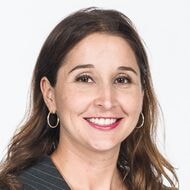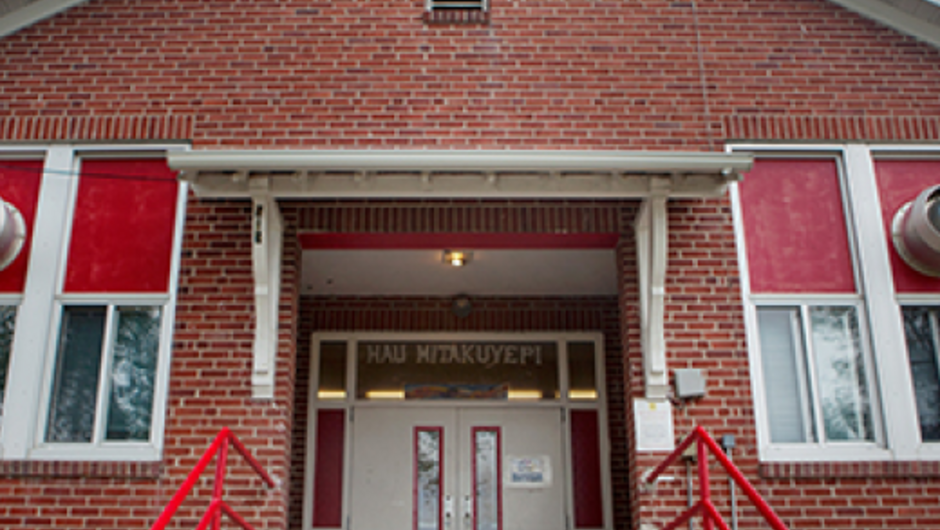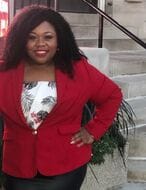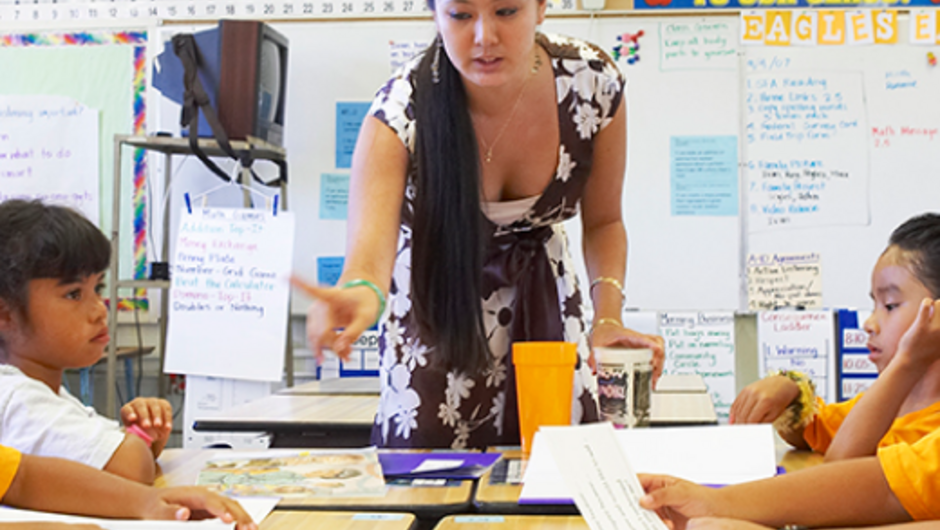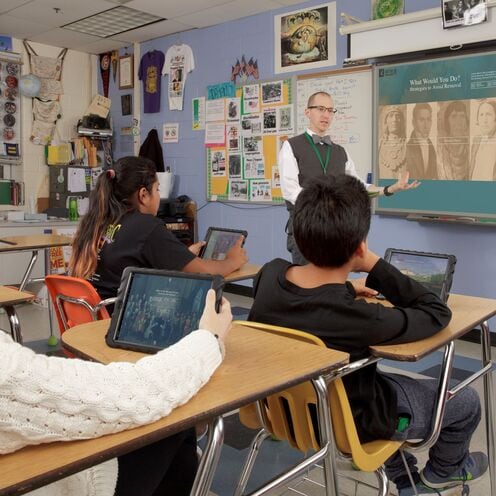
Think Beyond November: Learning Indigenous History and Perspectives All Year
An expert from the National Museum of the American Indian talks about ways to weave in culturally responsive lessons about diverse Indigenous cultures and contributions year-round.
November is a busy month for Renée Gokey, the teacher services coordinator for the Smithsonian’s National Museum of the American Indian. Between Native American Heritage Month and Thanksgiving, it’s a popular time for many educators and parents to seek out resources about Indigenous history and communities.
But lessons about Indigenous peoples shouldn’t just happen in November. Indeed, Gokey, a citizen of the Eastern Shawnee Tribe of Oklahoma, works with educators to expand and transform their lessons throughout the year. She helps educators move away from often limited and simplistic curricula to ensure lessons are accurate, more complete, and center Native peoples and perspectives—both past and present.
It’s critical students hear about and from contemporary Native Americans, Gokey stresses. Connecting past and modern-day stories, she explains, is key to fighting two of the biggest issues Native peoples face today: invisibility and stereotyping.
“Bring in contemporary voices. Let people know that Native Americans are very much part of society and alive today,” she said.
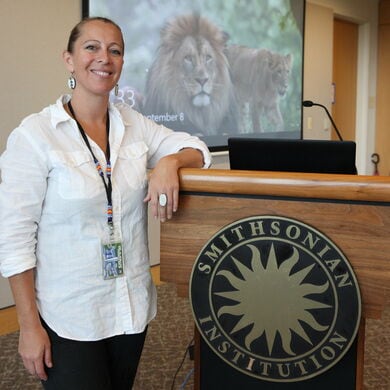
Research shows that practice is still rare. Most state history standards—87%—do not mention Native Americans after 1900, according to a 2015 Pennsylvania State University study. Another alarming figure: the National Congress of American Indians (NCAI) reports that 27 states do not mention a single Native American in K–12 curricula.
Some states have moved to include more Indigenous history and contemporary perspectives in their standards and curricula. But the NCAI and a federal survey show that much work remains to be done to make sure comprehensive curricula and lessons about Native American history, communities, and people are used in schools nationwide.
In this interview with One Day, Gokey shares ideas about how to bring added focus to Indigenous history and peoples in the classroom--and at home--all year.
Get more articles like this delivered to your inbox.
The monthly ‘One Day Today’ newsletter features our top stories, delivered straight to your in-box.
Content is loading...
Your job involves developing workshops and webinars, producing curricula and advising teachers on classroom resources and pedagogy with a social justice focus for Indigenous peoples. What drew you to this work with the National Museum of the American Indian?
As a citizen of the Eastern Shawnee Tribe of Oklahoma, my family was really the catalyst. And I firmly believe that meaningful learning experiences and curiosity about the world helps make a more just society and leads to a more hopeful future for all of us. It's meaningful for all kids. And it’s really important that Native American kids have culturally responsive and accurate resources, especially given the violent cultural erasure they once contended with at boarding schools. Making sure that everybody has access to more complete narratives, I think, helps heal society.
“Bring in contemporary voices. Let people know that Native Americans are very much part of society and alive today.”
What are some ways to help children understand what it means to be Indigenous today?
One very accessible method to center Indigenous culture throughout the year is through children's books. Native Americans are still very much underrepresented in books and children's literature, but that’s starting to change in exciting ways. There are now some really fantastic picture books and graphic novels out there by Native authors and illustrators. They are a great window for kids to learn about other cultures and for Native kids to also see themselves.
One book that’s on my radar is “Notable Native People” by Adrienne Keene. She's a Cherokee scholar who does work around cultural representation and appropriation. Traci Sorell, who is also Cherokee, has written some really nice contemporary books about native people today. Lee Francis, who is from Laguna Pueblo, has done a lot of really interesting work with children's young adult books, comic books and native publishing.
I also often refer librarians and English language arts teachers to researcher Debbie Reese, a citizen of Nambé Pueblo. She has done a lot of important work around American Indians and children’s literature.
What are some ways to begin to have thoughtful conversations with students and adults about the myths surrounding Thanksgiving?
I would say that when you’re talking about Thanksgiving with your children or in the classroom, first, acknowledge that Indigenous people have been here for thousands of years. Then, provide context before 1621.
For example, from 1616-1617, the Wampanoag were decimated by diseases introduced by Europeans, which killed as many as three-fourths of their population, according to the museum’s Harvest Ceremony – Beyond the Thanksgiving Myth Study Guide. Their enemies, the Narragansett, were hardly affected by the epidemic, and with wavering numbers, the Wampanoags befriended the Europeans in hopes of military support.
Interested in Joining Teach For America?
Many people rely on an excerpt from colonist Edward Winslow’s letter as a primary source of information about the harvest celebration, but when we actually read the letter, we realize many stories have been made up. Learn what actually happened there, the names of the people involved, and how the Wampanoag people feel about Thanksgiving today. Do additional background reading and seek out Indigenous perspectives, such as the Toasted Sister Podcast, which offers a contemporary Wampanoag point of view.
Where can educators find resources for culturally responsive instruction about Indigenous history and communities during the month of November and beyond?
The National Museum of the American Indian has a plethora of resources online through our Native Knowledge 360° education initiative for K-12 teachers and students. It’s free and accessible to the public. We often partner with Indigenous groups to work on the curriculum itself, inclusive of videos, writings, cultural artifacts and objects. It’s a great way to center Native voices. The website features Helpful Handouts on a variety of topics, including how to be culturally sensitive around Thanksgiving. One handout, for example, includes information on why it is inappropriate to dress up as a Native American because there is no one way for a Native American to look.
“Making sure that everybody has access to more complete narratives, I think, helps heal society.”
How can parents advocate for culturally responsive instruction about Native communities and history?
I know that it can be a little bit delicate, but I think it can be helpful to be proactive. As information about the curriculum is sent home, you can sometimes provide resources that show Native perspectives. For example, if a child is learning about the Dutch arrival to what we know as present-day Manhattan, they can also learn about the history of Indigenous people of New York.
Parents can also ask what educators are teaching and be in partnership with them. For example, I asked my child’s teacher what she will be teaching about Thanksgiving and offered to help. When she said she wasn’t sure, I mentioned our Thanksgiving poster, which provides contemporary looks at Thanksgiving traditions from six different indigenous communities. Thanksgiving is often referenced as one event in 1621, but there are millennia-old traditions among different Indigenous groups with this idea of giving thanks. For many, giving thanks doesn't happen on only one day and I think that the teaching poster can really help illuminate that.
It is important to seek out Indigenous perspectives when preparing educational activities about Indigenous peoples. How can teachers be sensitive about placing an undue burden on Native educators?
This is such a good question. I would suggest not seeking Indigenous educators or parents only in the month of November. Think about it all year. Indigenous educators and parents always joke, ‘We're here all year, you know?’ Everyone focuses on Native Americans this month so much; we'd love to see that happen throughout the year.
Doing some of your own research in advance is key so that Indigenous educators or parents might not have to always start from ground zero. For example, if you were going to reach out to an educator or elder to speak to your class, research the tribal website to learn what is important to the community before asking them what they can do for you. Share that information with your class ahead of the speaker’s visit.
And always use resources from reputable organizations who are committed to the work. Some examples include the National Indian Education Association, the National Congress of American Indians, museum exhibitions, and local tribal websites.
This interview was edited and condensed for clarity.
Featured image (above): A middle school class in 2016. Photos by Alex Jamison. (Provided by Museum of the American Indian)
We want to hear your opinions! To submit an idea for an Opinion piece or offer feedback on this story, visit our Suggestion Box.
Sign up to receive articles like this in your inbox!
Thanks for signing up!
Content is loading...


